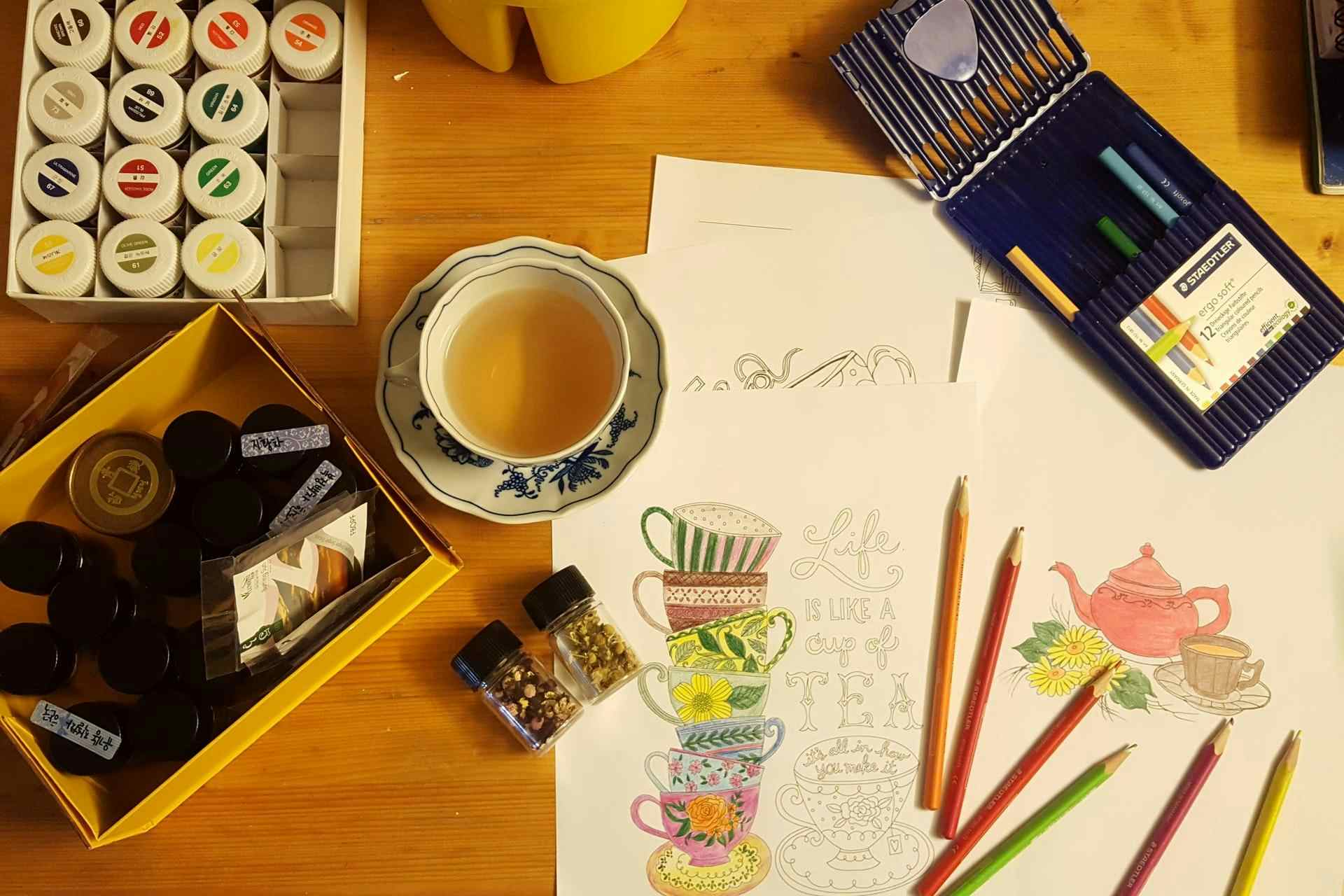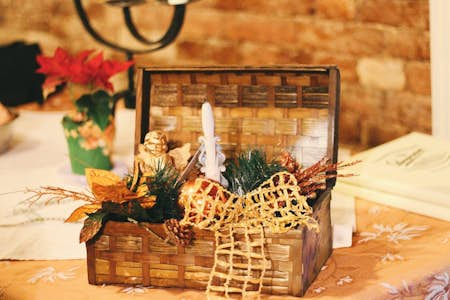Everyone needs some form of hobby to fill the gaps in their day-to-day lives, but hobbies can also develop a way of life or even a career.
Hobbies help relax us and provide us with enriching experiences - they’re part of the variety and spice of life. Whilst not all hobbies are strictly relaxing in a literal sense, they still help take our minds off other things and provide a means of escapism.
Even the craziest hobbies, whether rock climbing, parachuting or white-water rafting, help transport us somewhere else where ’normal life’ matters less.
One of the trickiest things about hobbies is coming up with new ones. The urge to find a new hobby can come over you at any time - it might be why you’re reading this now!
While putting this together, we spoke to Rachael Jess, who told us: "Engaging in a new hobby is the perfect way to exercise the brain. Like any muscle, it becomes lean and sharper the more it's used, and starting a new hobby is the perfect excerise. Some of these you can do it while having a cup of tea - what's not to love about that."
We have already published many other articles on hobbies to get stuck into, such as 14 hobbies you can do in a nursing home and 10 fun and unique hobbies for women over 50.
But for now, here are 13 unique and interesting hobbies that you must try.
1: Rock hunting/rockhounding
Somewhere around you or beneath your feet is a near-limitless supply of precious gems and minerals. Some of these precious gems and minerals find their way to the Earth’s surface, and that’s when they might fall into the hands of rock and fossil hunters.
Rock and fossil hunters (also called rockhounders in the USA) can even make a living off their quarry. You only need to ’strike gold’ once, though the legalities of rock and treasure hunting might stop you from becoming a millionaire overnight!
Even so, rock hunting is a great hobby, even if you choose to leave the specimen in situ.
The UK is rich in rocks and minerals if you know where to look. There are many rock and fossil hunting guides online and some great books to help guide your rockhounding efforts.
Rocky coastlines, particularly the Scottish coast, are a great starting point where rock formations can yield beautiful agates, fossils and even gemstones like jet. Quartz and geodes of various kinds can be found pretty much anywhere.
One of the most prolific places to find rocks and fossils in the UK is the Jurassic Coast which spans East Devon to Dorset. Fossils here are covered by the Fossil Collecting Code, which means you can usually take any fossils you find home with you.
In terms of legality, rock and fossil hunting is a bit of a grey area. If the land is private, the landowner’s permission must be obtained before taking the specimen home.
Taking rocks from Sites of Specific Scientific Interest, heritage sites or conservation zones is also prohibited. Always check before you collect!
2: Acrylic Pouring Art
Art and crafts lovers that don’t mind mess will love acrylic pouring. Acrylic pouring has really taken off in recent years, and you can now buy acrylic pouring sets with everything you need to get started.
The general concept behind acrylic pouring is mixing various liquid paints in a cup and then pouring them onto a canvas or other material. You can create interesting effects like cells and lacing by mixing in silicone oil and other additives.
Acrylic pouring is quite addictive, and one attempt usually leads to another...and another. Many acrylic pour artists sell their work on social media, Etsy and eBay.
3: Ghost Hunting
Ghosts are deeply woven into our culture. The UK is home to many ghosts that allegedly roam between the walls and rooms of cemeteries, graveyards, castles and stately homes.
If you fancy getting up close and personal with ghosts, then there’s an avid community of ghost hunters out there waiting for you. Haunted Houses run ghost tours everywhere, from old barracks and residential houses to country houses, castles, and stately homes.
Many of these tours run well into the early hours of the morning and are full of paranormal thrills and spills. In fact, they’re good fun regardless of whether or not you really believe in ghosts and often become a real hobby or enthusiasm of regular goers.
Ghost Club UK has some useful links for avid or prospective ghost hunters.
4: Kintsugi
Kintsugi is the Japanese art of piecing broken pottery and ceramics back together to repair the original piece or create an entirely new one. Kintsugi has a deeper motive than merely repairing the item - it’s about forming a new whole that is stronger than the sum of its parts.
Kintsugi is a metaphor for healing, rebuilding and embracing imperfections. Traditionally, gold is used between the cracks of the ceramics to emphasise the scars of the new piece.
You can use epoxy resin mixed with gold mica powder or use standard ceramic adhesives and then paint them gold. Kintsugi is a therapeutic practice as well as a hobby. With a little time and dedication, it’s possible to create beautiful works of art.
5: News Raiding
This one is a bit silly, but it’s still a hobby for some daring individuals who have gained notoriety for their news raiding escapades.
One such notorious news raider is Paul Yarrow from south London, who found he had a penchant for getting himself behind the shot in important news broadcasts.
Yarrow’s style is to just stand there awkwardly, and really, it’s totally benign, quite fun and has earned him his own slice of popular cultural history.
6: Wood Turning
Woodturning is a ’proper’ hobby that seems to consume people who become increasingly immersed by its therapeutic blend of technicality and craftsmanship.
You’ll need a benchtop woodturning lathe, some woodworking tools and of course, the wood itself. With just those tools, it’s possible to create everything from kitchenware to pens, jewellery and even furniture.
Beyond woodturning alone, there’s the all-encompassing hobby of woodwork.
7: Resin Casting
Epoxy resin is a very flexible and interesting material. It’s exceptionally strong and hard, but crucially, it sets as clear as glass, or even clearer. You can pour it into silicone moulds to create all sorts of 3D shapes and objects ranging from paperweights to jewellery and model replicas.
One of resin’s main hobby uses is resin casting. Almost anything can be cast in resin ranging from rare coins to flowers, old toys, trinkets or even the rocks and fossils you find whilst rock hunting.
All you need to cast resin is the resin itself, which costs around £20 for half a litre, and a silicone mould. Cubes are the most popular shape, but you can find cylindrical, pyramidal and spherical moulds too.
Epoxy resin is also used to create stunning tabletops and artwork when mixed with mica powder.
8: Edible Jelly Art
Jelly might be considered a little old fashioned, but jelly art is breathing new life into this classic wobbly foodstuff.
Since jelly is semi-solid and can be dyed in practically any colour, it’s ideal for creating stunning 3D edible art. Some examples include flowers, patterns and animals.
Of course, jelly art is edible and is used in the desserts of some high-end restaurants. It’s a unique hobby if you’re already into cooking or baking or serves as an exciting way to start experimenting with haute cuisine and dessert design.
9: Growing rare plants
Collecting plants is a hobby in itself, but growing rare plants takes it a step further. The question is, how can you get your hands on rare plant seeds or bulbs, given that they’re rare? They wouldn’t be rare if you could buy them from a garden centre or seed catalogue, after all, though you can find plenty of exotic and unusual species that are suitable for beginner and novice growers.
Truly rare and unusual plants are best obtained from a seed exchange like that offered by the Alpine Garden Society. There are also numerous Facebook groups dedicated to seed exchanges.
10: Spirograph
Spirographs have enjoyed a renaissance in recent years and have become adapted to older audiences. James May covered spirographs in James May: My Sister’s Top Toys, revealing modern approaches to the classic 1970s art game.
Many might recall spirographs as a real pain in the backside, but revisiting them as an adult is pleasantly surprising. Wild Gears offer gigantic spirographs for true connoisseurs and hobbyists. They take some practice, but it’s possible to create crazy (and highly sellable) art with some time and dedication.
11: Bonsai
Bonsai literally translates as ’tree in container or pot’, and that’s what a bonsai tree is. Contrary to what many assume, bonsai trees are not typically dwarf or miniature species but are full-sized trees or shrubs trained to remain small. Some even bear miniaturised fruits.
Bonsai is a great hobby because it has tremendous longevity. A bonsai tree can live as long as a real tree, outliving humans. The oldest known bonsai tree is thought to be 1000 years old and is currently kept in the Crespi Bonsai Museum in Milan, Italy.
Aside from their stunning beauty, bonsais have deep symbological meaning, namely harmony with nature, balance and peace. Bonsais are traditionally gifted to family and friends - different varieties of bonsai have different meanings when gifted to others.
12: Learn a weird instrument
There are hundreds, if not thousands, of instruments that many people have never heard of.
Classic FM published this post of the 13 weirdest instruments, and whilst some are pretty much unobtainable or priceless, others aren’t so difficult to get hold of.
Theremins are one such strange instrument that functions without any physical contact from the performer. They can regularly be found going 2nd hand on eBay.
Cheaper alternatives include the kalimba, the panpipes, and ocarina, all of which can be found at relatively low prices. Percussion fans should check out the Cajon - a type of box drum that you sit upon.
13: Making snow globes
Snow globes are simple yet enchanting and make a great DIY home project. Whilst snow globes are usually seasonally themed, they don’t have to be. They can be any miniaturised landscape or theme as contained in a globe or container.
Hobbycraft has an excellent how-to on building snowglobes here. You need to construct the landscape and then contain it inside the globe. The globe is typically filled with distilled water and some glycerin to thicken the water and prevent the glitter from falling too quickly.
Artists Walter Martin and Paloma Muñoz have been imbuing the humble snowglobe with their own poetic flair for 15 years, and the results are pretty mesmerising.








